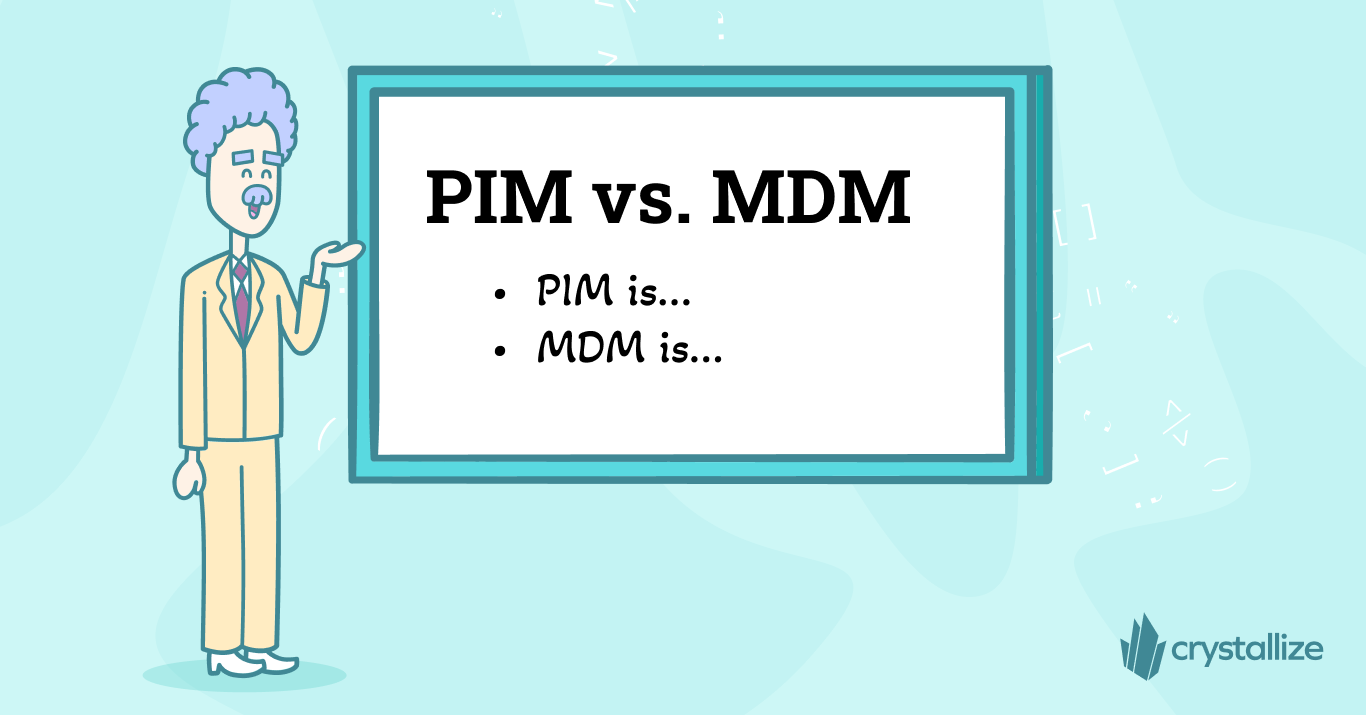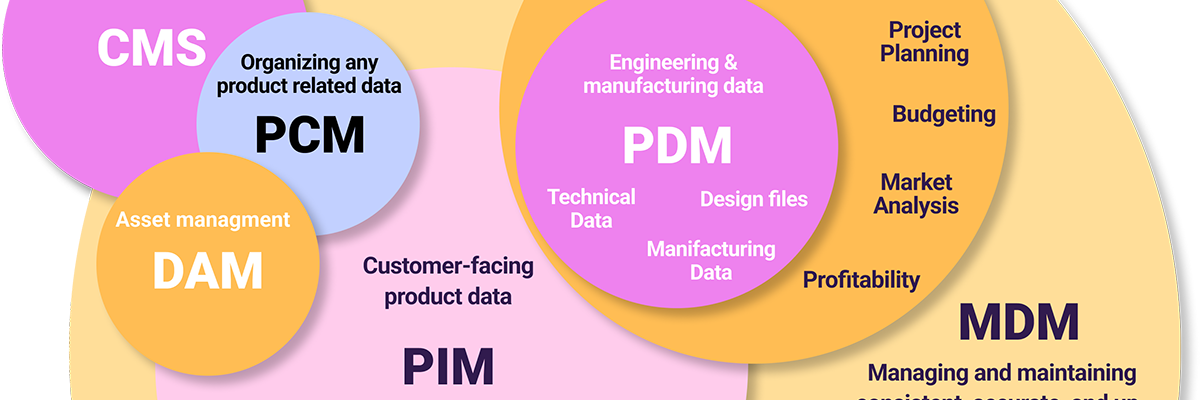PIM vs. MDM: What is the Difference?
MDM manages all types of company data, including those managed in PIM, making PIM a subset of MDM. Wait, what?

In the era of three-letter acronyms, it isn’t easy to keep on top of the subtle differences in meaning, especially when the concepts sound as similar as Product Information Management (PIM) and Master Data Management (MDM).
So let’s jump right in!
PIM and MDM are both important tools for managing and organizing data, but they serve different purposes. PIM focuses on managing product information (as explained in what is PIM post), while MDM is designed to manage all types of data, including products, customers, and suppliers, among others.
What is Master Data Management (MDM)?
Master Data Management (MDM) is a method of centrally managing and maintaining consistent, accurate, and up-to-date information about an organization's critical data entities, such as customers, products, and suppliers. It enables organizations to improve data quality, streamline processes and make better use of data for business decision-making.
Benefits of Using an MDM Solution
👍 Improved data quality, consistency, and accuracy, leading to better business decisions.
👍 Streamlined processes, reducing the need for manual data entry and the risk of errors.
👍 A single source of truth, enabling a better understanding of the data for all company departments.
👍 Improved data governance and security because of a more consistent data organization.
MDM Solutions Worth Checking
- Informatica MDM: Informatica MDM is a cloud-native, AI-powered Master Data Management platform. Highlighting its speed of deployment, they promise to enable faster deployment with all-in-one capabilities and prebuilt domain and industry content.
- SAP Master Data Governance: One of the best-known solutions in the market, SAP Master Data Governance helps improve the quality of business-critical information with a central hub for master data management and governance. Both on-premise SAP S/4HANA and cloud variants are available.
- IBM MDM: It is one of the most popular MDM solutions out there. This solution was recognized as “Customers’ Choice” by Gartner in 2021, and it offers just about everything you’d expect from an MDM as well-established as this one.
Ultimately, the best MDM solution for an organization will depend on your specific data management needs, budget, and IT infrastructure. But we’ve given you a great place to start.
💡Can Crystallize be used as MDM?
The short answer is; yes. One of the benefits of utilizing Crystallize is real-time access to your data. While being specifically designed to manage product information, the storytelling engine in Crystallize allows you to define fully custom content models to define what we often refer to as your product universe.
This could be information about products, but also suppliers, organizations, stores, materials, specifications, or even FAQs. Because Crystallize is API driven so any data can be created, manipulated and accessed via the APIs allowing for integration and automation of data management.
In case you already have an MDM in place, it is natural to import the basic master data into Crystallize and enrich it for a multichannel experience. Crystallize is designed as a true composable architecture with the benefit of centralizing and delivering real-time access to your data via fast GraphQL APIs while being able to opt-out to best-of-breed solutions depending on your use case.
The Difference Between PIM and MDM
PIM is specifically designed to manage product information, such as product descriptions, images, pricing, etc., to mainly support marketing and sales departments. PIM systems help organizations centralize and standardize product information that they then use to improve product catalogs, e-commerce sites, and other customer-facing channels.
On the other hand, MDM manages all types of company data, including the data managed in PIM and data such as products, customers, suppliers, etc. MDM systems help organizations improve all data quality, consistency, and accuracy, streamline processes, and better understand their data by providing a centralized, single source of truth.
And yes, all data means product information, too, so PIM can actually be seen as a subset of MDM. Companies that use PIM don’t have to use MDM, but companies that use MDM will almost always also use it to manage product data.
📑Managing Product Data and Tools You May Need Infographic.
What is PIM, and how different is it from MDM? Where do DAM and CMS overlap? And do you need PXM for your business use case? We’ve tried to clear up the acronym confusion in eCommerce with the following infographic that provides you with a visual comparison of all relevant terms. Individual posts dig deeper into each term and the concept behind it.
📝READ WHAT IS PIM AND DOWNLOAD THE INFOGRAPHIC FOR FREE FROM HERE

MDM Use Case
While MDM solutions would be useful for organizations of all sizes and across all industries to some extent, it’s worth noting that they’re particularly beneficial for organizations with complex data management needs, like those that have multiple systems and databases and siloed or inconsistent data. The bigger the company, the more it would benefit from one!
Say that you’re a retail company with multiple retail stores, an eCommerce site, and a wholesale division. You’d want to ensure that customers have consistent and accurate product information across all channels, right? Then from your side, you’d want to streamline the data management processes to improve your supply chain and inventory management.
That’s where an MDM solution would come into play, enabling improved data quality and consistency and ultimately leading to increased sales and customer satisfaction.
Not sure if you need an MDM or a PIM solution? Don't worry. We got you covered.
Seriously, schedule a personal 1-on-1 Crystallize demo, tailor-made to your use case, to understand the ins and outs of both approaches.
Or, why not SIGN UP for FREE and get an unparalleled level of support from our team to help you get going.

